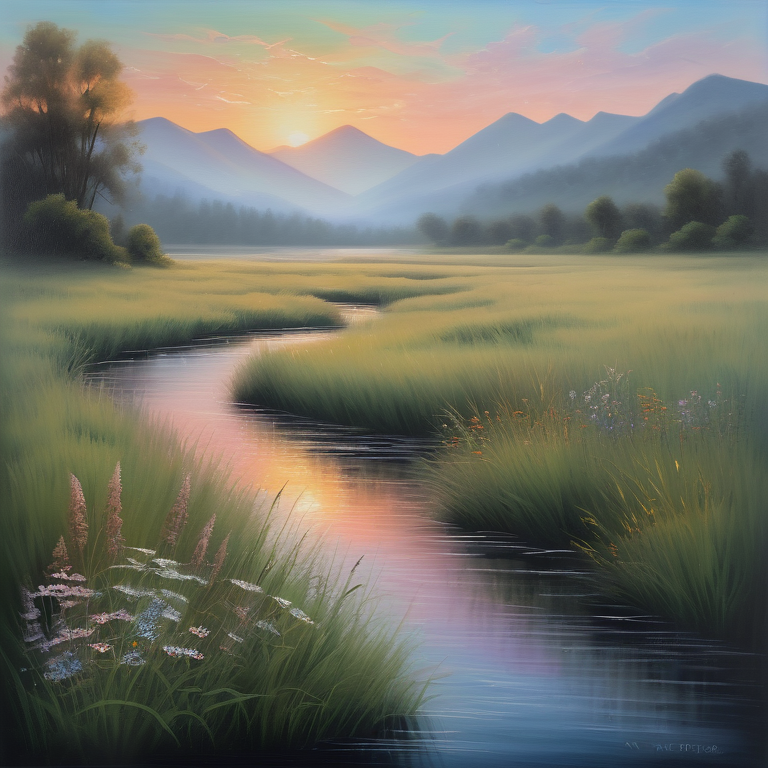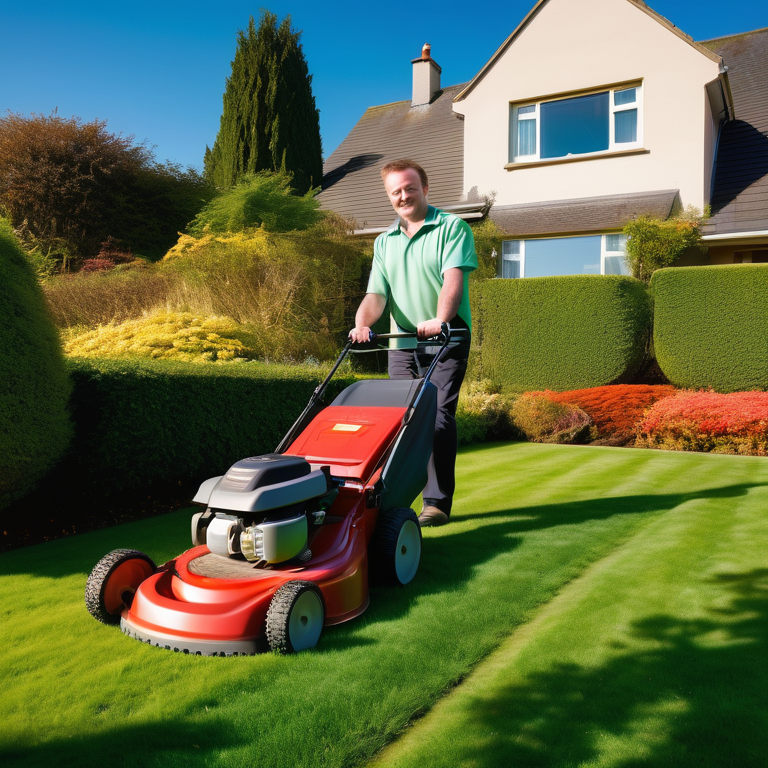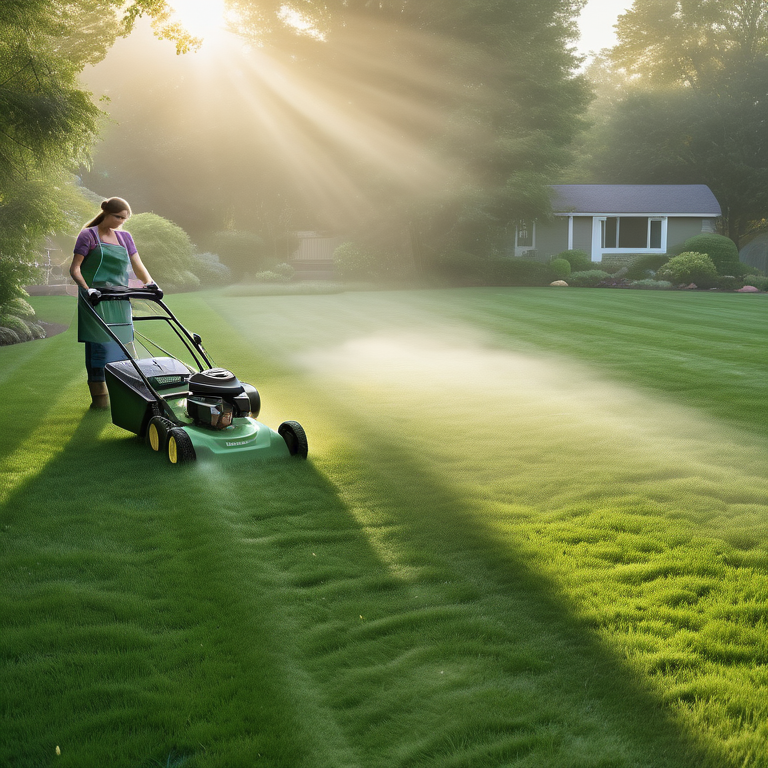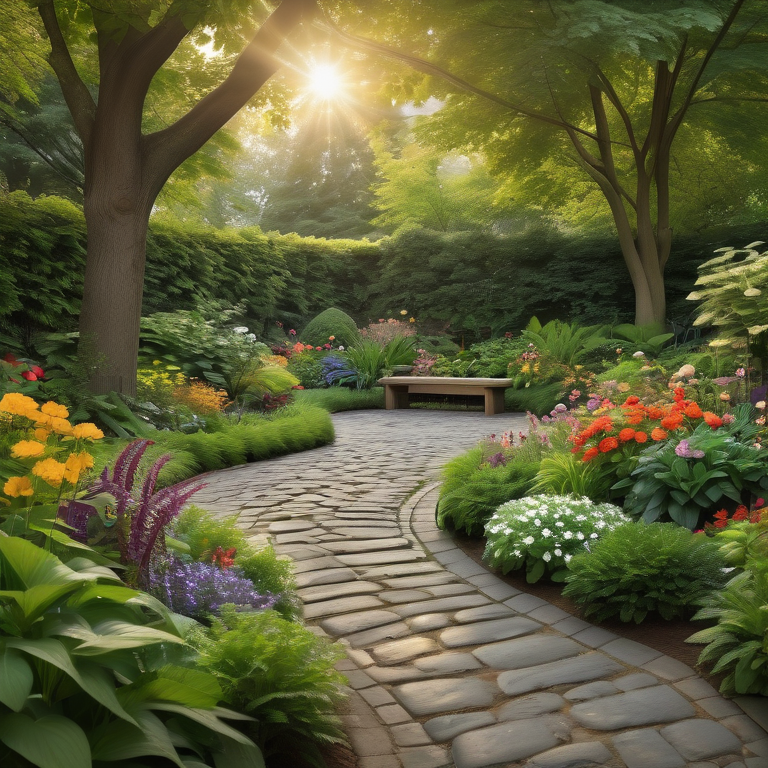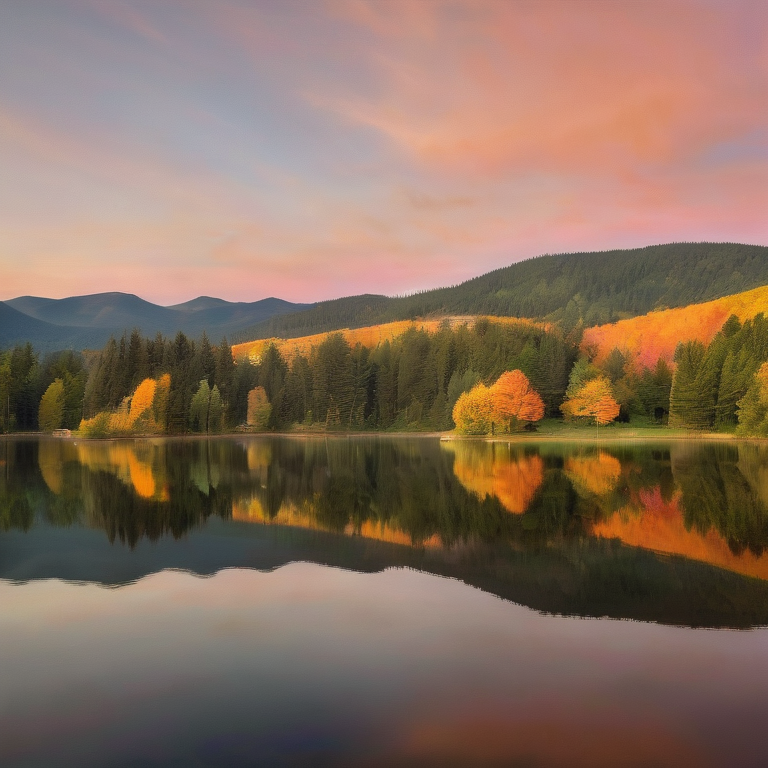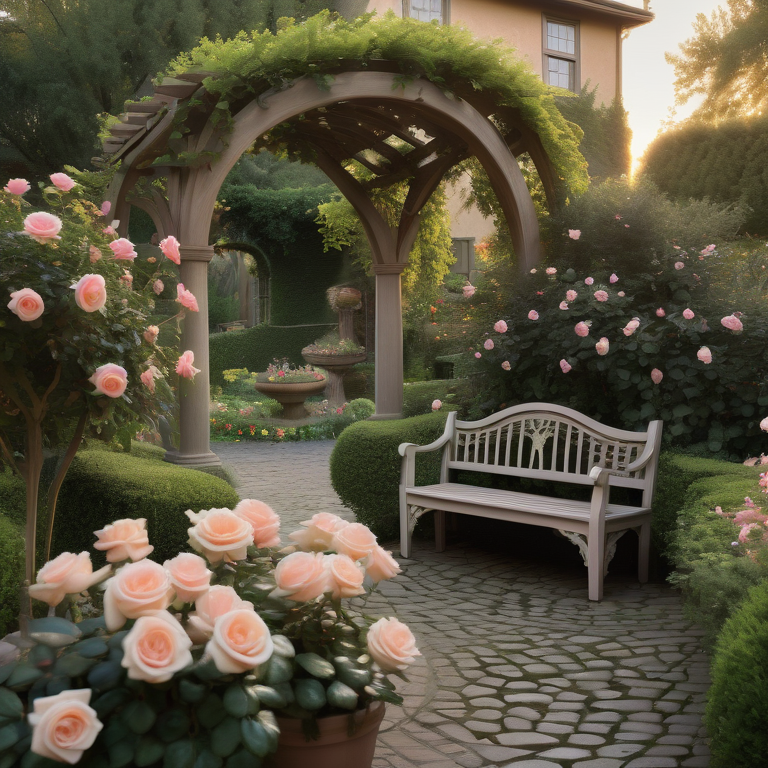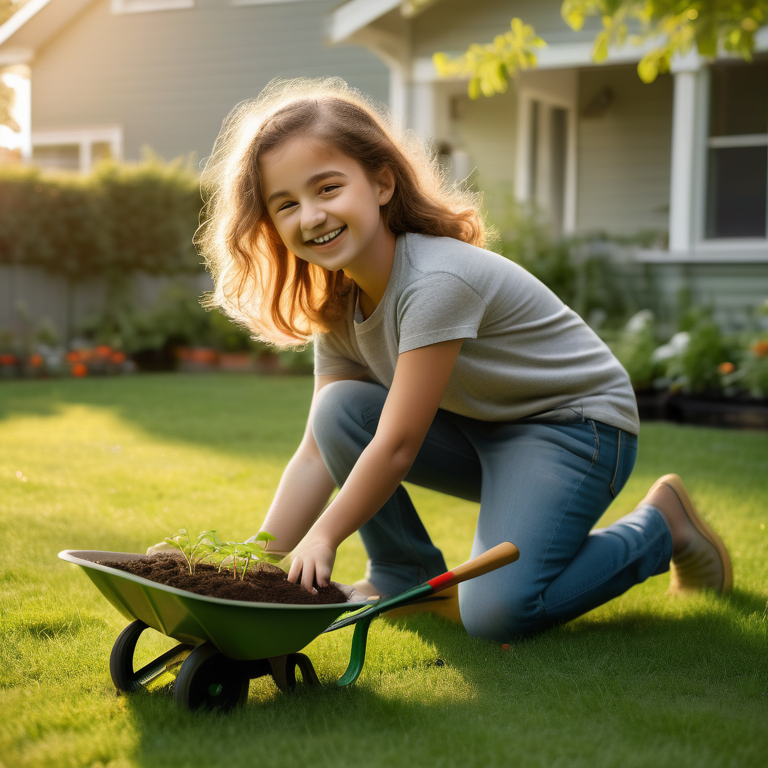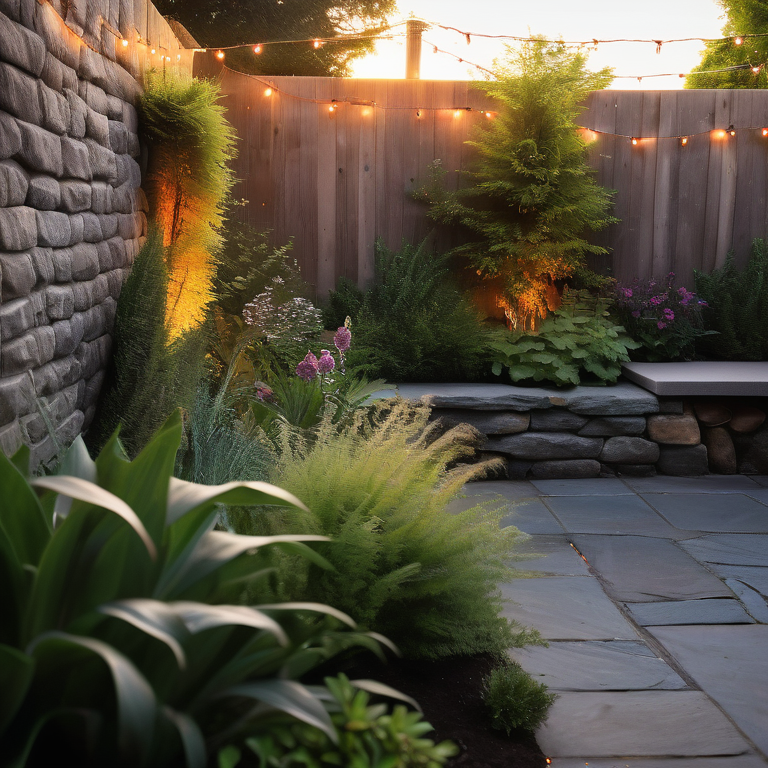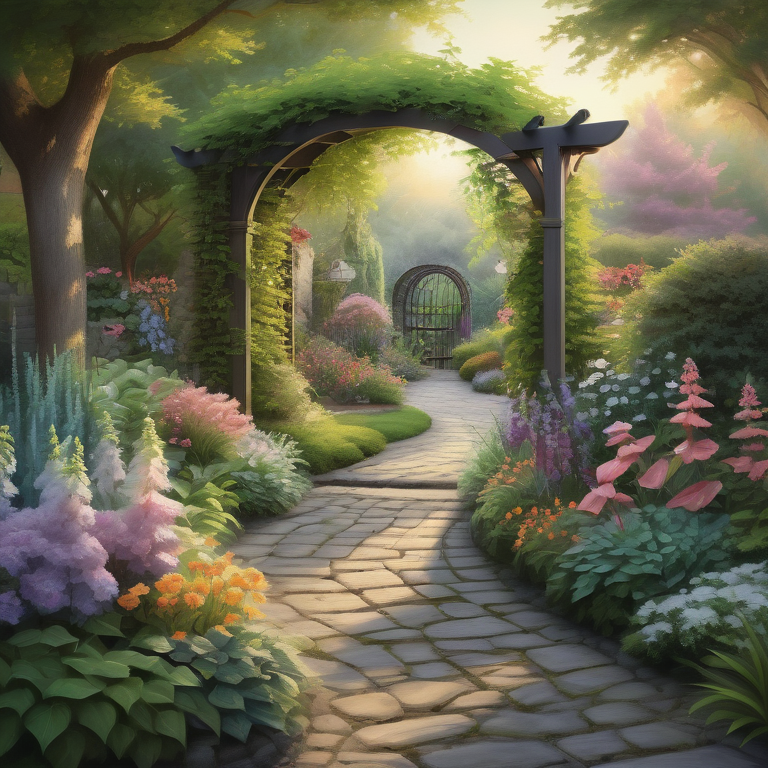What are the key techniques used in acrylic landscape painting?
Key techniques in acrylic landscape painting include layering to create depth, blending colors for transitions, and using different brush strokes for texture. Techniques like dry brushing, stippling, and sgraffito can enhance details and add dimension to your landscape painting.
Key Highlights
- Acrylic paints are a popular choice for landscape painting due to their quick drying time and versatility.
- Acrylics offer a wide range of colors, including metallic and iridescent options, allowing artists to easily capture the natural beauty of landscapes.
- The affordability of acrylic paints makes them accessible for artists of all levels.
- Essential tools for acrylic landscape painting include a variety of paintbrushes, a good quality canvas, acrylic paints, a palette for mixing colors, a palette knife, and optional mediums for texture.
- Choosing the right colors and brushes is crucial to the painting process, setting the tone and character of the artwork.
- Step-by-step demonstration: A detailed guide on how to paint a landscape in acrylics, including outlining the composition, blocking in the painting, and adding layers and details to bring the artwork to life.
Introduction
Welcome to this blog post guide on how to paint a landscape in acrylic paints. In this article, I will demonstrate how to paint a landscape that features a river in a rugged mountain valley inspired by the south island of New Zealand. Landscape painting is a wonderful way to connect with nature and unleash your creativity. It offers a unique opportunity to create art that captures the beauty of natural scenery, specifically the stunning mountain landscape of Fiordland, and brings a sense of tranquility and inner peace. This tutorial will focus on creating an original art print using acrylic paints, allowing you to master the techniques and create your own unique landscape paintings.
Landscape painting can be a daunting task, especially for beginners. However, with the right tools, techniques, and patience, anyone can create stunning landscape paintings. In this step-by-step guide, I will focus on acrylics, a versatile and popular medium for landscape painting. Acrylic paints are known for their quick drying time, bright colors, and affordability, making them ideal for artists of all levels.
Whether you are an aspiring artist or a seasoned professional, this guide will provide you with step-by-step instructions to help you create your beautiful acrylic landscape painting. So, let’s dive in and discover the joy of painting landscapes with acrylics.
Understanding Acrylics for Landscape Painting
Acrylic paints are a popular choice for landscape painting due to their unique properties and versatility. Acrylics are made from a water-based polymer that dries quickly, allowing artists to build up layers and make changes on the canvas without waiting for extended periods. This quick drying time is particularly beneficial for landscape painting, as it allows artists to quickly correct mistakes or experiment with different techniques. The vibrant colors and fast-drying nature of acrylics make them well-suited for capturing the dynamic and ever-changing nature of landscapes. www.wicklowlandscaping.ie
The Advantages of Using Acrylics in Landscape Art
Acrylic paints offer several advantages for artists creating landscape art. Firstly, their versatility allows artists to create a wide range of effects and textures on the canvas. Acrylics can be thinned with water or a specialized thinner, such as OPEN thinner, for transparent washes or watercolour type techniques with a longer working time. They can also be mixed with various mediums to create unique textures and finishes. This versatility makes acrylics suitable for capturing the diverse elements found in landscapes, from lush forests to rocky mountains.
Secondly, acrylic paints are more affordable compared to other painting mediums like oil paints. This affordability makes acrylics accessible to artists of all levels, allowing them to experiment and explore their creativity without breaking the bank.
Lastly, the quick drying time of acrylic paints is a major advantage for landscape artists. Unlike oil paints, acrylics dry quickly, allowing artists to build up layers and make changes without waiting for extended periods. This quick drying time is particularly useful when capturing the ever-changing light and atmosphere of landscapes. www.wicklowlandscaping.ie
Key Differences Between Acrylic and Other Painting Mediums
While acrylic paints have many advantages for landscape painting, it’s important to understand the key differences between acrylic and other painting mediums such as watercolor and oil paint.
One major difference is the drying time. Acrylic paints dry quickly, allowing artists to work faster and make changes on the canvas without waiting for extended periods. On the other hand, watercolor paints have a much longer drying time and require more patience. Oil paints have the longest drying time, sometimes taking days or even weeks to fully dry.
Another difference is the texture and handling of the paints. Acrylic paints have a smooth consistency and can be easily blended and layered on the canvas. Watercolor paints have a more transparent and fluid consistency, allowing for delicate washes and subtle gradients. Oil paints have a thick, buttery consistency, making them ideal for creating rich textures and impasto effects.
Additionally, the cleanup process and toxicity levels vary between the mediums. Acrylic paints are water-soluble and can be easily cleaned with water, making them less toxic and more environmentally friendly. Watercolor paints are also water-soluble, while oil paints require solvents for cleanup.
By understanding these differences, artists can choose the painting medium that best suits their style and preferences for landscape painting.
Preparing Your Canvas and Tools
Before you begin your acrylic landscape painting, it’s important to prepare your canvas and gather the necessary tools. The canvas you choose can have a significant impact on the final result of your artwork. Consider the texture, durability, and priming of the canvas to ensure it is suitable for acrylic painting.
Next, gather your acrylic paints in the desired colors for your landscape. Acrylic paints come in a wide range of colors, including the essential colour of green, allowing you to capture the vibrancy and beauty of nature. Consider using a variety of brushes, including a filbert brush, which is ideal for blending and creating soft edges in landscape painting. Don’t forget to add a touch of ultramarine blue to your palette for creating depth and shadows in your landscape. www.wicklowlandscaping.ie
Selecting the Right Canvas for Acrylic Landscape Painting
Choosing the right canvas is crucial for acrylic landscape painting. The canvas serves as the foundation for your artwork and can greatly impact the final result. When selecting a canvas, consider factors such as texture, durability, and priming.
Texture: The texture of the canvas refers to the surface quality, which can range from smooth to heavily textured. For landscape painting, a canvas with a slightly textured surface can help mimic the texture and depth of natural landscapes. This texture can enhance the overall visual appeal of your artwork.
Durability: Since acrylic paints are water-based, it’s important to choose a canvas that is durable and can withstand the moisture. Look for a canvas that is specifically designed for acrylic painting or labeled as suitable for water-based paints. This ensures that the canvas won’t warp or deteriorate when exposed to moisture.
Priming: Priming the canvas is an important step in acrylic painting as it provides a smooth and stable surface for the paint to adhere to. Look for a canvas that is pre-primed for acrylic painting, such as a Winsor & Newton deep edge canvas, or prime it yourself using gesso, a white paint mixture that seals and prepares the canvas for painting with titanium white. For a vibrant and versatile color, consider using Permanent Alizarin Crimson from Winsor & Newton’s Artist Acrylic line.
By considering these factors when selecting a canvas, you can ensure that you have a suitable surface for creating your acrylic landscape masterpiece. www.wicklowlandscaping.ie
Essential Tools and Materials for Getting Started
To get started with acrylic landscape painting, it’s important to have the essential tools and materials on hand. Here are some of the key items you’ll need:
- Acrylic paints: Choose a selection of colors that will capture the desired landscape, including various shades of greens, blues, browns, and earth tones.
- Brushes: Invest in a variety of brushes, including flat brushes for broad strokes and large areas, round brushes for detailed work and lines, and fan brushes for blending and creating texture.
- Palette knives: These are useful for mixing paints, creating texture, and applying paint directly to the canvas.
- Canvas: Select a canvas that is suitable for acrylic painting, with the desired size and texture.
- Easel: An easel can provide a stable and adjustable surface for painting, allowing you to work at a comfortable height and angle.
- Palette: Use a palette for mixing your paints, whether it’s a traditional wooden palette or a disposable palette pad.
- Water container: Have a container of water nearby for rinsing your brushes.
- Rags or paper towels: Keep some rags or paper towels handy for cleaning brushes and wiping off excess paint.
These are just some of the essential tools and materials you’ll need to get started with acrylic landscape painting. As you continue to develop your skills and experiment with different techniques, you may find additional tools and materials that suit your style and preferences. www.wicklowlandscaping.ie
Basic Techniques for Acrylic Landscape Artists
Mastering the basic techniques is essential for acrylic landscape artists. Understanding and practicing these techniques will allow you to create depth, texture, and realistic effects in your paintings. Three fundamental techniques for acrylic landscape painting are blending, layering, and glazing.
Blending: Blending involves smoothly transitioning colors on the canvas. Use soft brush strokes and a gentle touch to create smooth gradients and transitions between colors.
Layering: Layering is the process of building up multiple layers of paint to create depth and dimension. Start with lighter colors and gradually add darker colors on top to create depth and volume in your landscape.
Glazing: Glazing involves applying thin, translucent layers of paint over a dry layer of paint. This technique adds richness and luminosity to your colors, allowing light to pass through the layers and create a sense of depth.
By mastering these basic techniques, you’ll be on your way to creating stunning acrylic landscape paintings. www.wicklowlandscaping.ie
Layering and Blending Techniques for Dynamic Scenes
Layering and blending techniques are essential for capturing the dynamic nature of landscapes. These techniques allow you to create depth, texture, and realistic effects in your paintings.
Wet-on-wet technique: This technique involves applying wet paint on top of wet paint. It allows for smooth blending and creates soft transitions between colors. Use a soft brush and work quickly to blend the wet paint before it dries.
Dry brush technique: The dry brush technique involves using a brush with minimal paint and applying it with a light touch. This technique creates texture and can be used to add highlights or details to your landscape.
Transparency: Acrylic paints can be thinned with water to create transparent washes. This technique allows you to build up layers of translucent colors, adding depth and creating a sense of atmosphere in your painting.
By mastering these layering and blending techniques, you can bring your dynamic landscape scenes to life on the canvas.
Creating Textures and Details in Acrylic Landscapes
Creating textures and details in acrylic landscapes can add depth and visual interest to your paintings. Here are some techniques you can use to create textures and details:
Impasto: Impasto involves applying thick layers of paint to create texture and dimension. Use a palette knife or a brush to apply the paint in thick strokes, adding texture to elements such as rocks, trees, or foliage.
Sgraffito: Sgraffito is a technique where you scratch or scrape the surface of the paint to reveal the layers beneath. You can use a palette knife or a pointed tool to create fine lines or texture on the canvas.
Palette knife: The palette knife can be used not only for mixing colors but also for applying paint directly to the canvas. By using the knife’s edge or flat surface, you can create interesting textures and bold strokes in your landscape.
Experiment with these techniques to add texture and details to your acrylic landscapes. It’s a great way to make your paintings more visually engaging and realistic. www.wicklowlandscaping.ie
Color Theory in Landscape Painting
Understanding color theory is essential for creating harmonious and visually appealing landscape paintings. Color theory involves the study of how colors interact with each other and how they can be used to create harmony and contrast in your artwork.
Color harmony: Color harmony refers to the pleasing combination of colors in a painting. By choosing colors that work well together, you can create a sense of unity and balance in your landscape. Consider using analogous colors (colors that are next to each other on the color wheel) or complementary colors (colors that are opposite each other on the color wheel) to achieve color harmony in your landscape.
Complementary colors: Complementary colors can create a strong contrast in your painting. They are colors that are opposite each other on the color wheel, such as blue and orange, or red and green. Using complementary colors in your landscape can add visual interest and create a vibrant and dynamic composition.
Color temperature: Color temperature refers to the perceived warmth or coolness of a color. Warm colors, such as reds, oranges, and yellows, can create a sense of warmth and energy in your landscape. Cool colors, such as blues and greens, can create a sense of calmness and tranquility. By understanding color temperature, you can use it to evoke specific moods and atmospheres in your landscape painting.
By applying color theory principles, you can create visually harmonious and captivating landscapes that capture the essence of your subject. www.wicklowlandscaping.ie
Choosing a Color Palette for Natural Scenery
Choosing the right color palette is crucial for capturing the natural beauty of scenery in your landscape painting. Here are some tips for selecting a color palette for natural scenery:
Primary colors: Primary colors (red, yellow, and blue) are the building blocks of all other colors and can form the basis of your color palette. They can be used to mix a wide range of other colors and provide a solid foundation for your landscape.
Secondary colors: Secondary colors (orange, green, and purple) are created by mixing two primary colors together. They can be used to add depth and variety to your color palette.
Earth tones: Earth tones, such as browns, greens, and grays, are often found in natural landscapes. They can be used to create a sense of realism and capture the natural essence of the scenery.
Consider the colors that are prevalent in your reference photo or in the landscape you are painting and use those as a starting point for your color palette. Experiment with different combinations and variations to create a palette that best represents the natural beauty of the scene. www.wicklowlandscaping.ie
Tips for Mixing Acrylic Paints to Achieve the Desired Hue
Mixing acrylic paints is a fundamental skill for achieving the desired hue in your landscape painting. Here are some tips for effectively mixing acrylic paints:
Pigment: Acrylic paints are made from pigments suspended in a binder. Different pigments have varying levels of opacity, transparency, and intensity. Experiment with different pigments to achieve the desired color and effect in your painting.
Saturation: Saturation refers to the intensity or purity of a color. Mixing colors of different saturation levels can help you achieve a wide range of colors and tones in your landscape. Start with less saturated colors and gradually add more saturated colors to achieve the desired hue.
Value: Value refers to the lightness or darkness of a color. By varying the amount of white or black in your mixtures, you can create different values and add depth and dimension to your landscape. Start with mid-tones and gradually add lighter or darker values, including the darkest darks and lightest lights, to create highlights and shadows in the foreground of your painting.
Remember to mix paint on a palette using a palette knife or a brush. Start with small amounts of paint and gradually add more as needed. Use a clean palette or palette paper to mix your colors to avoid contaminating the paints with unwanted colors.
By mastering the art of color mixing, you can achieve the exact hues and shades you desire in your landscape painting. www.wicklowlandscaping.ie
Composing Your Landscape Painting
Composing your landscape painting is about arranging the elements in the scene to create a visually appealing and balanced composition. Here are some key considerations for composing your landscape painting:
Focal point: Determine the focal point of your painting, which is the main point of interest or the center of attention. It could be a prominent feature in the landscape, such as a mountain or a tree, or a specific area where you want to draw the viewer’s eye.
Balance: Create balance in your by distributing the visual weight of the elements evenly across the canvas. This can be achieved through symmetrical or asymmetrical arrangements of elements, such as balancing a large tree on one side with a smaller tree on the other.
Perspective: Use perspective techniques to create a sense of depth and space in your landscape. Consider using techniques like the rule of thirds, leading lines, and diminishing size to create a realistic and visually engaging composition.
By carefully composing your landscape painting, you can create a visually pleasing and balanced artwork that captures the essence of the scene. www.wicklowlandscaping.ie
Principles of Composition in Landscape Art
The principles of composition are essential in creating visually appealing and engaging landscape art. Here are some key principles to consider when composing your landscape painting:
Rule of thirds: The rule of thirds involves dividing your canvas into a grid of nine equal parts and placing the main elements of your composition along the lines or at the intersections. This creates a balanced and visually pleasing composition.
Leading lines: Leading lines are lines that guide the viewer’s eye through the composition. They can be natural elements like rivers or paths that lead the eye into the painting, creating a sense of depth and perspective.
Symmetry: Symmetry in composition involves creating a balanced and harmonious arrangement of elements. It can be achieved by placing identical or similar elements on both sides of the canvas, creating a sense of stability and order.
By applying these principles of composition, you can create a visually engaging and well-balanced landscape painting.
Using Reference Photos and Sketches Effectively
Using reference photos and sketches effectively can greatly enhance your landscape painting. Here are some tips for using reference photos and sketches:
Thumbnail sketches: Create quick thumbnail sketches to explore different compositions and arrangements of elements. This allows you to experiment with different compositions and determine what works best for your painting.
Photo references: Use high-quality photo references to capture the details, colors, and lighting of the landscape. Take your own photos or use copyright-free images to ensure you have the necessary references for your painting.
Composition: Use your reference photos and sketches as a guide to create a well-composed painting. Consider the placement of elements, the focal point, and the overall balance of the composition.
Remember that reference photos and sketches are tools to guide your painting process. Use them as a reference and inspiration, but also allow yourself the freedom to make creative decisions and interpret the landscape in your own unique way. www.wicklowlandscaping.ie
Step-by-Step Guide to Painting an Acrylic Landscape
In this step-by-step guide, I will walk you through the process of painting an acrylic landscape. Follow these steps to create your beautiful landscape painting:
Underpainting: Start by applying a thin layer of paint to establish the overall tonal values and general color scheme of your landscape. This underpainting will serve as a foundation for the rest of your painting.
Blocking in: Once the underpainting is dry, start blocking in the major shapes and colors of your landscape. Use large brushes and bold strokes to establish the basic elements of the scene.
Detailing: As you progress, start adding more details to your painting. Use smaller brushes and finer strokes to add texture, highlights, and shadows to create depth and realism in your landscape.
By following these steps, you can create a beautifully layered and detailed acrylic landscape painting. www.wicklowlandscaping.ie
Blocking in the Basic Shapes and Colors
When blocking in the basic shapes and colors of your landscape, it’s important to establish the foundation of your painting. Here are some tips for blocking in:
Silhouette: Start by blocking in the overall silhouette or outline of the landscape. Use a dark color to define the major shapes and forms.
Local color: After establishing the silhouette, block in the local color of each element. The local color refers to the natural color of the object or element you are painting. Observe the colors in your reference photo or sketch and mix the appropriate hues to represent the natural colors of the landscape. The first thing to do is to assess the tones in the picture to see where to start and the lightest and dark areas.
Underpainting: Consider applying an underpainting, which is a thin layer of paint that establishes the overall tonal values and color scheme of your landscape. This underpainting can provide a foundation for the rest of your painting and help establish the overall mood and atmosphere.
By blocking in the basic shapes and colors, you can establish the structure and foundation of your landscape painting. www.wicklowlandscaping.ie
Adding Layers and Details to Bring Your Painting to Life
Once you have blocked in the basic shapes and colors of your landscape, it’s time to add layers and details to bring your painting to life. Here are some tips for adding layers and details:
Highlights: Add highlights to your painting to create dimension and bring attention to certain elements. Use a lighter value of the color to add highlights on objects that catch the light.
Shadows: Shadows add depth and realism to your painting. Use a darker value of the color to add shadows to objects and create a sense of form and volume.
Detailing: Use smaller brushes and finer strokes to add details to your painting. Pay attention to textures, patterns, and small elements that contribute to the overall realism and visual interest of your landscape.
By adding layers and details, you can create a visually engaging and dynamic landscape painting.
Capturing Light and Atmosphere in Your Paintings
Capturing light and atmosphere is essential for creating realistic and captivating landscape paintings. Here are some key considerations for capturing light and atmosphere:
Light source: Identify the direction and intensity of the light source in your landscape. This will determine the placement of highlights and shadows in your painting and create a sense of depth and three-dimensionality.
Atmospheric perspective: Use atmospheric perspective to create a sense of distance and depth in your landscape. Objects that are farther away appear hazier and less distinct, while objects that are closer appear sharper and more detailed.
Luminosity: Pay attention to the luminosity or brightness of different elements in your landscape. Use lighter values and brighter colors to create a sense of luminosity and bring attention to focal points or areas of interest in your painting.
By effectively capturing light and atmosphere, you can create a realistic and visually captivating landscape painting.
Techniques for Painting Realistic Light and Shadows
Painting realistic light and shadows is crucial for creating depth and dimension in your landscape painting. Here are some techniques for capturing realistic light and shadows:
Chiaroscuro: Chiaroscuro is a technique that involves using strong contrasts between light and dark to create a sense of volume and three-dimensionality. Use deep shadows and bright highlights to create dramatic lighting effects in your landscape.
Value contrast: Value contrast refers to the difference in brightness between light and dark areas. Use a range of values from light to dark to create a sense of depth and form in your landscape. Pay attention to the values in your reference photo or sketch and use a variety of colors and tones to capture the full range of values.
Glazing: Glazing involves layering thin, transparent layers of paint to create subtle changes in value and color. Use glazing techniques to create soft transitions between light and shadow and to add depth and luminosity to your landscape.
By employing these techniques, you can create realistic and visually striking light and shadow effects in your landscape paintings. www.wicklowlandscaping.ie
Conveying Weather and Time of Day in Your Artwork
Conveying weather and the time of day in your artwork can add depth and atmosphere to your landscape paintings. Here are some tips for capturing different weather conditions and times of day:
Golden hour: The golden hour is a period shortly after sunrise or before sunset when the light is soft, warm, and golden. Use warm colors and soft lighting to capture the magical quality of this time of day.
Overcast: Overcast conditions can create a diffused, soft light with muted colors. Use cool colors and subtle variations in value to capture the moody atmosphere of an overcast day.
Twilight: Twilight is the period between daytime and nighttime, characterized by low light and rich, atmospheric colors. Use deep shadows, vibrant colors, and subtle gradations to capture the unique lighting and mood of twilight.
By paying attention to the weather conditions and time of day in your landscape, you can create a sense of realism and capture the mood and atmosphere of the scene.
Common Challenges in Acrylic Landscape Painting
Acrylic landscape painting comes with its own set of challenges. Here are some common challenges you may encounter:
Drying time: Acrylic paints dry quickly, which can make blending and layering more challenging. Work quickly and use additives like retarder to extend the drying time if needed.
Blending: Achieving smooth and seamless blends can be difficult with acrylic paints due to their quick drying nature. Practice blending techniques and work in small sections to maintain control over the paint.
Overworking: Overworking the paint can lead to muddy colors and a loss of texture and detail. Be mindful of how much you’re working the paint and try to preserve the freshness and vibrancy of your brushstrokes.
By being aware of these common challenges and practicing the necessary techniques, you can overcome them and create beautiful acrylic landscape paintings.
Preventing and Fixing Mistakes in Acrylic Painting
Mistakes happen in painting, but there are several ways to prevent and fix them in acrylic painting. Here are some techniques for preventing and fixing mistakes:
Lifting: If you make a mistake, such as applying too much paint or the wrong color, you can lift the paint off the canvas using a clean, damp brush or sponge. Gently scrub the area to remove the unwanted paint.
Scraping: If the paint has dried, you can use a palette knife or a scraper tool to scrape off the unwanted paint. Be careful not to damage the surface of the canvas.
Washing: If you’re not happy with a particular area of your painting, you can wash off the paint using water and a soft brush. This allows you to start fresh and make corrections.
By knowing these techniques, you can correct mistakes and maintain the quality of your acrylic landscape painting.
How to Keep Your Acrylic Paints from Drying Too Quickly
While the quick drying time of acrylic paints can be advantageous, there are times when you may want to slow down the drying process. Here are some tips to keep your acrylic paints from drying too quickly:
Retarder: Adding a retarder or a slow-drying medium to your acrylic paints can extend the drying time. Follow the manufacturer’s instructions for the correct amount to use.
Wet palette: Using a wet palette can help keep your acrylic paints moist for longer periods. This is especially useful when working on larger projects or when you need more time for blending and layering.
Environmental conditions: The drying time of acrylic paints can be affected by environmental conditions such as temperature and humidity. Working in a cooler and more humid environment can slow down the drying process. You can also mist your paints or palette with water to keep them moist.
By implementing these techniques, you can have more control over the drying time of your acrylic paints and work at a pace that suits your painting style.
Evolving Your Style in Acrylic Landscape Art
When it comes to acrylic landscape painting, developing your personal style is an essential aspect of artistic growth. Experimentation is key in finding your unique voice as an artist. Don’t be afraid to try different techniques, subject matters, and color palettes to discover what resonates with you.
As you explore different styles, take inspiration from master landscape painters. Studying the work of renowned artists can provide valuable insights into composition, brushwork, and color choices. Analyze their techniques and try incorporating them into your own artwork. This can help you develop a deeper understanding of the medium and refine your skills.
Another way to evolve your style is through continuous practice and experimentation. Push the boundaries of traditional landscape painting by exploring abstract, impressionistic, or expressionistic styles. Embrace bold brushstrokes, vibrant colors, and unconventional compositions. Allow your creativity to guide you and don’t be afraid to take risks.
Remember that artistic growth is a journey, and it takes time to develop a distinctive style. Be open to learning from others, but also trust your instincts and stay true to your artistic vision. With dedication and patience, you will gradually evolve your style and create truly unique acrylic landscape paintings. www.wicklowlandscaping.ie
Studying the Work of Master Landscape Painters
Studying the work of master landscape painters is a valuable exercise for any aspiring artist. By examining their techniques, understanding their artistic choices, and analyzing their compositions, you can gain insights that will enhance your own artwork.
Art history is a vast resource that provides a wealth of inspiration. Take the time to research and study the works of renowned landscape painters such as Claude Monet, J.M.W. Turner, and Thomas Moran. Analyze their brushwork, use of color, and composition to understand how they captured the essence of nature in their paintings.
One technique you can practice is creating master studies. Choose a painting by a master landscape painter that resonates with you and try to replicate it as closely as possible. This exercise will help you understand the artist’s decision-making process and develop your technical skills.
Another way to study the work of master painters is by visiting art museums and galleries. Take the opportunity to view their paintings in person and observe the details up close. Pay attention to the brushwork, color mixing, and overall composition. Take notes or sketch ideas that inspire you for future reference.
By immersing yourself in the work of master painters and understanding their techniques, you can expand your artistic knowledge and apply those insights to your own acrylic landscape paintings. Remember, it is not about copying their work, but rather learning from their expertise and incorporating those lessons into your own unique style. www.wicklowlandscaping.ie
Experimenting with Different Styles and Techniques
Acrylic landscape painting offers a wide range of possibilities when it comes to styles and techniques. Embracing experimentation is key to finding your own artistic voice and developing a unique style. Here are some styles and techniques you can explore in your acrylic landscape paintings:
- Abstract: Break away from realistic representation and explore the world of abstract landscape painting. Use bold brushstrokes, vibrant colors, and unconventional compositions to create an emotional and expressive interpretation of the landscape.
- Impressionism: Inspired by the impressionist movement, this style focuses on capturing the fleeting effects of light and color. Use loose brushwork, broken color, and vibrant hues to create a sense of atmosphere and movement in your landscape paintings.
- Expressionism: Explore the emotional and subjective aspects of the landscape through expressionistic painting. Use bold, gestural brushstrokes, exaggerated colors, and distorted perspectives to convey your personal response to the scene.
- Collage: Incorporate collage elements into your landscape paintings to add texture and depth. Experiment with different materials such as handmade paper, fabric, or found objects to create unique mixed media.
- Palette Knife Texturing: Use a palette knife instead of a brush to apply thick, textured paint to your canvas. This technique adds dimension and visual interest to your landscape paintings, creating a tactile quality that captures the essence of the landscape.
Remember, there are no rules when it comes to artistic expression. Feel free to combine different styles and techniques, and don’t be afraid to make mistakes. Embrace experimentation as an opportunity for growth and discovery in your acrylic landscape painting journey. www.wicklowlandscaping.ie
Preserving and Presenting Your Acrylic Landscapes
Once you have created beautiful acrylic landscape paintings, it’s important to preserve and present them in the best possible way. Proper preservation and presentation not only enhance the visual impact of your artwork but also ensure its longevity. Here are some tips on preserving and presenting your acrylic landscapes:
- Varnishing: Applying a varnish to your acrylic paintings helps protect them from dust, UV rays, and other environmental factors. Choose a varnish that offers UV protection and is compatible with acrylic paints. Follow the manufacturer’s instructions for application and drying times.
- Framing: Framing your acrylic landscapes adds a professional touch and protects them from damage. Select a frame that complements your painting and enhances its visual impact. Consider using archival-quality materials to prevent deterioration over time.
- Archival Quality: When selecting materials for your artwork, choose archival-quality products that ensure the longevity of your paintings. This includes using acid-free paper, canvas, and framing materials. Archival-quality materials help prevent yellowing, fading, and other forms of deterioration.
- Lighting: Proper lighting is essential for showcasing the true colors and details of your acrylic landscapes. Avoid displaying your paintings in direct sunlight, as it can cause fading and damage over time. Use adjustable track lighting or LED lights to illuminate your artwork effectively.
- Display: Consider the placement and arrangement of your acrylic landscapes to create an inviting display. Group related paintings together or create a focal point by showcasing a larger piece as the centerpiece. Experiment with different arrangements to find the most visually pleasing display.
- Photographing Your Artwork: If you plan to share your acrylic landscape paintings online or in print, it’s important to capture high-quality photographs. Use proper lighting, a tripod, and a high-resolution camera to capture the colors, details, and textures of your artwork accurately.
By taking the time to preserve and present your acrylic landscapes properly, you can ensure that they remain vibrant and captivating for years to come. Invest in quality materials, follow best practices, and display your artwork in a way that enhances its beauty and impact.
Varnishing and Framing Tips for Acrylic Paintings
Varnishing and framing your acrylic paintings not only enhances their visual appeal but also provides protection and longevity. Here are some tips for varnishing and framing your acrylic landscape paintings: www.wicklowlandscaping.ie
Varnishing:
- Wait for Proper Drying: Ensure that your acrylic painting is completely dry before applying varnish. This usually takes around 1-2 weeks, depending on the thickness of the paint layers. Applying varnish to a painting is not fully dry can lead to cracking or bubbling.
- Choose the Right Varnish: Select a varnish specifically designed for acrylic paintings. There are two types of varnishes: spray varnish and brush-on varnish. Spray varnish provides an even and thin layer, while brush-on varnish allows for more control and customization. Choose a varnish with UV protection to prevent fading.
- Test Before Applying: Test the varnish on a small corner of your painting or on a test piece to ensure compatibility and desired results. Some varnishes may alter the colors or sheen of the paint, so it’s important to test beforehand.
- Application: Follow the manufacturer’s instructions for applying varnish. Apply varnish in thin, even coats using a soft brush or spray. Avoid overbrushing, as it can create streaks or brush marks. Allow each coat to dry completely before applying subsequent coats.
Framing:
- Choose the Right Frame: Select a frame that complements your acrylic landscape painting and enhances its visual impact. Consider the style, color, and material of the frame to create a harmonious presentation. Wood, metal, or composite frames are common choices for acrylic paintings.
- Use Archival Materials: When framing your acrylic painting, use archival-quality materials to prevent deterioration. Acid-free mats, backing boards, and tapes are essential for protecting your artwork from discoloration and damage. UV-resistant glass or acrylic glazing can help protect the painting from UV rays.
- Professional Framing: If you’re not comfortable framing your acrylic painting yourself, consider seeking professional framing services. Professional framers have the expertise and tools to ensure your painting is securely and beautifully framed.
- Mounting: If you choose to mount your painting within the frame, use archival methods such as hinging or mounting corners. Avoid directly attaching the painting to the backing board, as can lead to damage over time.
By following these varnishing and framing tips, you can preserve and present your acrylic landscape paintings in a professional and visually appealing manner. Proper varnishing and framing not only protect your artwork but also enhance its overall presentation and longevity.
Best Practices for Photographing Your Artwork
Photographing your acrylic artwork is essential for sharing it with the world, whether through online platforms or print media. Capturing high-quality photographs is crucial for accurately representing the colors, details, and textures of your artwork. Here are some best practices for photographing your acrylic landscape paintings:
- Lighting: Use even, natural light or studio lighting to illuminate your artwork. Avoid direct sunlight, as it can cause harsh shadows and color distortion. If using artificial lighting, ensure that the color temperature matches the light source (e.g., daylight bulbs).
- Tripod: Use a sturdy tripod to stabilize your camera and achieve sharp, clear photographs. This eliminates the risk of camera shake and ensures consistent framing.
- Composition: Frame your artwork within the camera’s viewfinder or LCD screen to capture the entire painting. Pay attention to the edges of the frame to avoid cutting off any important details.
- Focus: Use manual focus or autofocus to ensure that the painting is in sharp focus. Double-check the focus after taking each photo to ensure clarity.
- White Balance: Set the white balance of your camera to accurately represent the colors of your artwork. This ensures that whites appear white and colors are true to life.
- File Format: Shoot in RAW or high-resolution JPEG format to capture as much detail as possible. RAW files allow for more flexibility in post-processing, while high-resolution JPEGs are suitable for online sharing and printing.
- Post-processing: Use photo editing software to adjust the exposure, color balance, and sharpness of your photographs. This ensures that the digital representation of your artwork closely matches the original.
- Online Sharing: Resize your photographs appropriately for online sharing to optimize file size without compromising image quality. Choose the appropriate resolution and file format (JPEG or PNG) for the platform on which you are sharing your artwork.
Remember to experiment with different camera angles, lighting setups, and editing techniques to find what works best for your acrylic landscape paintings. High-quality photographs are invaluable for promoting and showcasing your artwork to a wider audience.
Taking Your Acrylic Landscape Painting to the Next Level
Once you have mastered the basics of acrylic landscape painting, you may want to challenge yourself and take your artwork to the next level. This involves exploring advanced techniques, embracing creative challenges, and focusing on professional development. Here are some ways to elevate your acrylic landscape paintings:
- Advanced Techniques: Dive deeper into the world of acrylic landscape painting by learning advanced techniques. Explore techniques such as aerial perspective, negative painting, and palette knife texturing. These techniques can add depth, texture, and visual interest to your paintings.
- Creative Challenges: Push yourself outside of your comfort zone by setting creative challenges for each painting. Experiment with unconventional color palettes, unusual compositions, or abstract interpretations of landscapes. Embrace the opportunity to take risks and explore new artistic territory.
- Professional Development: Invest in your artistic growth by enrolling in workshops, classes, or online courses focused on acrylic landscape painting. These opportunities allow you to learn from experienced artists, expand your skill set, and gain valuable insights to refine your craft.
- Critiques and Feedback: Seek constructive criticism and feedback on your artwork from fellow artists or mentors. Participate in art communities, forums, or critique groups to receive valuable insights and different perspectives on your work. This feedback can help you identify areas for improvement and refine your artistic vision.
- Exhibition and Gallery Opportunities: Explore to showcase your acrylic landscape paintings in galleries, art shows, or online exhibitions. Taking part in exhibitions not only allows you to gain exposure but also provides valuable networking opportunities and feedback from art professionals.
Remember, artistic growth is a continuous process that requires dedication, practice, and a willingness to embrace new challenges. By exploring advanced techniques, setting creative challenges, and investing in professional development, you can elevate your acrylic landscape paintings and take your artwork to new heights.
Advanced Techniques for More Complex Compositions
To create more complex compositions in your acrylic landscape paintings, you can incorporate advanced techniques that add depth, realism, and visual interest to your artwork. Here are some advanced techniques to consider:
- Aerial Perspective: Aerial perspective refers to the natural phenomenon where objects appear less distinct and bluer as they recede into the distance. Use this technique to create a sense of depth and distance in your landscape paintings. Lighten the values, reduce the level of detail, and add a bluish tint to objects in the background.
- Negative Painting: Negative painting involves painting around the subject to define its shape and form. This technique adds depth and dimension to your artwork. By painting the space around objects, you can create a sense of space and bring the subject to life.
- Palette Knife Texturing: Experiment with palette knife texturing to add texture and visual interest to your acrylic landscape paintings. Use a palette knife to apply thick, textured paint to create the illusion of grass, foliage, or other natural elements. This technique adds dimension and tactile quality to your artwork.
- Layering and Glazing: Build up layers of transparent or translucent glazes to create depth and luminosity in your landscape paintings. This technique involves applying thin layers of paint over dried layers, allowing the underlying colors to show through. Glazing can create a sense of atmosphere, depth, and richness in your artwork.
- Experimenting with Mediums: Explore the use of different mediums to enhance the texture, transparency, or drying time of your acrylic paints. Gel mediums, texture pastes, or pouring mediums can add unique effects and visual interest to your landscape paintings.
By incorporating these advanced techniques into your acrylic landscape paintings, you can create more complex compositions that captivate viewers and showcase your artistic growth.
Incorporating Mixed Media Elements into Your Landscapes
Incorporating mixed media elements into your acrylic landscape paintings can add depth, texture, and visual interest to your artwork. Here are some mixed media techniques to consider:
- Collage: Use collage techniques to incorporate materials such as handmade paper, fabric, or found objects into your landscape paintings. This can add texture and create unique visual effects. Collage elements can represent foliage, textures, or patterns found in nature.
- Ink: Experiment with ink washes or ink pens to add fine details, lines, or textures to your landscapes. Ink can be used to create intricate tree branches, grasses, or other delicate elements. It can also be used to add calligraphic marks or textural effects to your paintings.
- Pastel: Combine acrylic paint with soft pastels to add vibrant colors, subtle shading, or atmospheric effects to your landscapes. Soft pastels can be applied over dry acrylic paint layers to create highlights, shadows, or textural details. They can also be used to add a soft, dreamy quality to your artwork.
- Texture Mediums: Experiment with texture mediums such as modeling paste, molding paste, or texture gels to add three-dimensional texture to your landscapes. These mediums can be applied with a palette knife or brush and can create the illusion of rocks, tree bark, or other natural textures.
- Collagraph Printing: Explore collagraph printing techniques to create unique textures and patterns in your landscapes. Collagraph involves creating a textured plate using materials such as cardboard, fabric, or string, and then applying ink or paint to the plate and transferring it onto paper or canvas. This technique can add depth and visual interest to your artwork.
Incorporating mixed media elements into your acrylic landscapes allows you to explore new textures, colors, and techniques, adding a unique touch to your artwork. Experiment with different materials and techniques to find combinations that resonate with your artistic vision.
Conclusion
In mastering acrylic landscape painting, understanding techniques, tools, and color theory is crucial. From preparing your canvas to capturing light and atmosphere, each step contributes to creating stunning landscapes. Embrace challenges as opportunities to evolve your style, experiment with different approaches, and preserve your artwork effectively. With practice and dedication, your acrylic landscapes will reflect your creativity and passion. Keep exploring new techniques, studying master painters, and pushing the boundaries of your art. Let your imagination guide you in taking your acrylic landscape painting to new heights of expression and creativity.
Frequently Asked Questions
What Are the Best Brushes for Acrylic Landscape Painting?
The best brushes for acrylic landscape painting are synthetic or natural bristle brushes. Synthetic brushes are durable, easy to clean, and ideal for creating smooth, precise brushstrokes. They are suitable for both large areas and fine details. Natural bristle brushes, such as hog or sable brushes, are great for creating texture and expressive brushstrokes in your landscape paintings. Fan brushes and detail brushes are also useful for adding specific details or special effects in your artwork.
How Do I Choose a Color Scheme for My Landscape?
When choosing a color scheme for your landscape, consider the mood, season, and lighting you want to convey. Use a color wheel to explore complementary colors (opposite on the color wheel) or analogous colors (next to each other on the color wheel). Complementary colors create contrast and vibrancy, while analogous colors create harmony and a sense of unity. Consider the emotional impact you want to achieve and experiment with different color combinations to find what resonates with your vision.
Can Acrylic Paint Be Used Outdoors for Plein Air Painting?
Yes, acrylic paint can be used outdoors for plein air painting. Acrylic paints are versatile and dry quickly, making them ideal for painting outdoors. Plein air painting allows you to capture the beauty and nuances of the landscape directly from nature. Acrylic paints are portable and can withstand different environmental factors, such as heat, cold, and wind. However, it’s important to consider the drying time of acrylics and bring appropriate supplies for outdoor painting, such as a palette, brushes, and water for cleaning.
What Are Some Tips for Painting Water and Reflections in Acrylic?
When painting water and reflections in acrylic, consider the reflective surfaces, transparency, and ripple effects. Use transparent or translucent layers of paint to create the illusion of depth and reflection. Pay attention to the way light interacts with the water and create subtle shifts in color and value to mimic the movement of the water. Use soft brushstrokes or glazes to depict ripples or small waves. Study reference photos or observe real-life water scenes to understand the nuances of water and reflections.
How Can I Make My Acrylic Landscape Paintings Look More Realistic?
To make your acrylic landscape paintings look more realistic, focus on creating depth, using naturalistic colors, and paying attention to detail. Incorporate techniques such as aerial perspective, where objects in the distance appear lighter and less detailed. Use a variety of values, from light to dark, to create realistic shading. Study the colors found in nature and mix your paints to match those colors accurately. Pay attention to small details such as textures, highlights, and shadows to create a sense of realism in your artwork.

